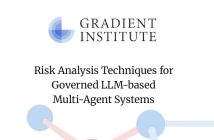Surveillance and CCTV products are no longer just an extended eye for security professionals. Instead, these increasingly sophisticated tools are becoming essential for 360-degree crime prevention and situation monitoring across a variety of industries.
Imagine if you could predict future crimes and prevent them. This is the premise of TV show Person of Interest in which a genius billionaire builds a supercomputer that uses mass surveillance information for the purposes of preventing terrorist activity, which the Government buys. The machine, however, also starts to predict ‘ordinary’ crimes as well, the kind overlooked every day, and in response the genius assembles a team of vigilantes to prevent them.
The current crop of CCTV products are not quite at crystal ball level, but the increasing sophistication of the technology, paired with the kind of intelligence security professionals have been seeking for years has turned a fictional drama series into a kind of, if not probable then at least plausible, reality.
The upside of the current crop is that innovation appears to be more affordable than ever. In the next year you will notice a lot of technology developed for high level military and Government purposes coming into the commercial market at budget friendly prices. Not only is this process faster than previous public-to-private and specialist-to-mainstream transitions, the efficiency gains from an operational perspective, which result in lower ongoing costs and increased environmental benefits, makes change irresistible and inevitable.
State of surveillance
The CCTV and video surveillance market will be worth US$23.5 billion by the close of 2014, according to the ‘Global CCTV Market Forecast to 2014’ report researched by RNCOS. While much of the increase between now and the end of next year will come from a switch from analogue to digital, and the burgeoning markets in Asia – particularly China and India – and the Middle East, a great deal will be fuelled by equipment that can aid analytics whether contained within the CCTV systems themselves or in peripheral products that have become mainstream – and valuable – enough to enhance a standard system.
The use of CCTV has also expanded from a focus on security and safety to other purposes throughout industry, ranging from traffic flow to manufacturing. Companies like video surveillance and access control solutions technology company, Genetec, provide products and services to markets as diverse as transportation, education, retail, gaming and Government. This has led to the evolution of the equipment from an ‘eye’ to a system that can gather other intelligence to aid analysis and monitoring.
On the security front, this gives professionals the ability to analyse images and monitor unfolding situations with clearer detail and more supportive evidence, leading to fewer false alarms and better response times for incidents. The technology’s ability to provide more accurate information for incident diagnosis allows the system to be used for resource management as well as standard security operations.
Melinda Halstead, spokesperson for FLIR Systems, says the brand’s thermal imaging systems provide simultaneous threat detection and assessment. Thermal security cameras make pictures from heat not light, so are perfect for total darkness and obscured visual fields such as in smoke, dust, fog and blinding sunlight.
“Video is sent – even to mobile devices – for inspection to ascertain the need for further investigation. The crisp images allow for verification as to what has tripped the alarm, saving on unnecessary guard callouts,” she explains. “A turnkey system offers a unique combination of thermal security cameras, video analytics software and other intrusion detection sensors for integrating and displaying feedback from all of a facility’s perimeter security sensors on one display.”
Complementary security
In many cases, the technology comes not from the CCTV system itself, but from complementary equipment that assists information gathering. One such case is Raytec, a specialist lighting manufacturer, which supplies infrared and white-light LED lighting for CCTV systems and general illumination.
Cat McElroy of Raytec says the company’s VARIO IP, the first network CCTV illuminator in the security industry, helps CCTV cameras capture better images. Operators can control the lighting in the same way they control the IP cameras, to ensure the system works together to give the best information to the user. “Users have full control over their lighting at all times to respond to live events or security risks in real time, deter crime, perfect CCTV image quality and alter settings in response to operational changes,” she says.
Genetec provides CCTV enhancement for the security industry in a complementary fashion also. By allowing security professionals to customise their system through its software, a unified security platform called Security Centre 5.2. Omnicast, the IP video management system can be used for intelligent monitoring.
Genetec’s Jaime Li, says Omnicast enables users to set threat levels that will tell the system to instantly trigger a mode of operation to respond a change in security conditions. “New security-oriented features allow customers to better mitigate risk and respond to changing security conditions in real-time. Operators can command a rapid response in the event of a threat, by instantly modifying system settings based on preset configurations.”
This may include stepping up privacy controls, where system administrators can restrict access to live and recorded cameras based on user security levels to prevent the viewing of sensitive data.
The price is right
One result of the growing CCTV industry is increased competition and a reduction in price for sophisticated technology. This comes from a number of avenues such as increased efficiency during the production and operation of a product as well as advancements in technology bringing down the cost of innovation and increasing product availability.
Li says Genetec aimed for greater operational efficiency ‘through product simplification and enhanced collaboration capabilities between security desk operators’ for its platform. The software’s automated features also enables flexibility and scalability without the need to add more personnel, because it allows current personnel to diagnose and focus on real security issues rather than false alarms.
For FLIR Systems, the lower cost of innovation brings top technology into the budget range of non-traditional customers. “Advancements in thermal imaging systems and software, once solely for the domain of military and defence, are now seeing technological innovations in commercial security and surveillance,” says Halstead.
Having a commercial market also allows suppliers to identify different benefits, she adds. “The security industry is faced with the challenges of finding ways to cut expenses, without jeopardising the integrity of a product or service; thermal imaging security technology arms it with the means to reduce costs related to power consumption, nuisance and false alarms and carbon pricing.”
The environmental advantages are also evident in Raytec’s products, where performance is enhanced by sustainability initiatives. “All Raytec illuminators have a long life, a low power consumption and require zero maintenance, leading to huge energy and cost savings,” says McElroy. “Triggering lighting on detection of a subject also provides a more dynamic installation intended to deter crime.”
The multifaceted use of CCTV systems and the new intelligence now available over physical surveillance has changed dramatically in the past few years and will continue to serve a market hungry for more than just a network of cameras. The cost and environmental benefits will continue to play a role in product selection as innovation pushes technology towards other sources of information gathering in security as well as employing a range of uses for CCTV across other industries. Watch this space.
By Adeline Teoh
Surveillance and CCTV products are no longer just an extended eye for security professionals. Instead, these increasingly sophisticated tools are becoming essential for 360-degree crime prevention and situation monitoring across a variety of industries.
Imagine if you could predict future crimes and prevent them. This is the premise of TV show Person of Interest in which a genius billionaire builds a supercomputer that uses mass surveillance information for the purposes of preventing terrorist activity, which the Government buys. The machine, however, also starts to predict ‘ordinary’ crimes as well, the kind overlooked every day, and in response the genius assembles a team of vigilantes to prevent them.
The current crop of CCTV products are not quite at crystal ball level, but the increasing sophistication of the technology, paired with the kind of intelligence security professionals have been seeking for years has turned a fictional drama series into a kind of, if not probable then at least plausible, reality.
The upside of the current crop is that innovation appears to be more affordable than ever. In the next year you will notice a lot of technology developed for high level military and Government purposes coming into the commercial market at budget friendly prices. Not only is this process faster than previous public-to-private and specialist-to-mainstream transitions, the efficiency gains from an operational perspective, which result in lower ongoing costs and increased environmental benefits, makes change irresistible and inevitable.
State of surveillance
The CCTV and video surveillance market will be worth US$23.5 billion by the close of 2014, according to the ‘Global CCTV Market Forecast to 2014’ report researched by RNCOS. While much of the increase between now and the end of next year will come from a switch from analogue to digital, and the burgeoning markets in Asia – particularly China and India – and the Middle East, a great deal will be fuelled by equipment that can aid analytics whether contained within the CCTV systems themselves or in peripheral products that have become mainstream – and valuable – enough to enhance a standard system.
The use of CCTV has also expanded from a focus on security and safety to other purposes throughout industry, ranging from traffic flow to manufacturing. Companies like video surveillance and access control solutions technology company, Genetec, provide products and services to markets as diverse as transportation, education, retail, gaming and Government. This has led to the evolution of the equipment from an ‘eye’ to a system that can gather other intelligence to aid analysis and monitoring.
On the security front, this gives professionals the ability to analyse images and monitor unfolding situations with clearer detail and more supportive evidence, leading to fewer false alarms and better response times for incidents. The technology’s ability to provide more accurate information for incident diagnosis allows the system to be used for resource management as well as standard security operations.
Melinda Halstead, spokesperson for FLIR Systems, says the brand’s thermal imaging systems provide simultaneous threat detection and assessment. Thermal security cameras make pictures from heat not light, so are perfect for total darkness and obscured visual fields such as in smoke, dust, fog and blinding sunlight.
“Video is sent – even to mobile devices – for inspection to ascertain the need for further investigation. The crisp images allow for verification as to what has tripped the alarm, saving on unnecessary guard callouts,” she explains. “A turnkey system offers a unique combination of thermal security cameras, video analytics software and other intrusion detection sensors for integrating and displaying feedback from all of a facility’s perimeter security sensors on one display.”
Complementary security
In many cases, the technology comes not from the CCTV system itself, but from complementary equipment that assists information gathering. One such case is Raytec, a specialist lighting manufacturer, which supplies infrared and white-light LED lighting for CCTV systems and general illumination.
Cat McElroy of Raytec says the company’s VARIO IP, the first network CCTV illuminator in the security industry, helps CCTV cameras capture better images. Operators can control the lighting in the same way they control the IP cameras, to ensure the system works together to give the best information to the user. “Users have full control over their lighting at all times to respond to live events or security risks in real time, deter crime, perfect CCTV image quality and alter settings in response to operational changes,” she says.
Genetec provides CCTV enhancement for the security industry in a complementary fashion also. By allowing security professionals to customise their system through its software, a unified security platform called Security Centre 5.2. Omnicast, the IP video management system can be used for intelligent monitoring.
Genetec’s Jaime Li, says Omnicast enables users to set threat levels that will tell the system to instantly trigger a mode of operation to respond a change in security conditions. “New security-oriented features allow customers to better mitigate risk and respond to changing security conditions in real-time. Operators can command a rapid response in the event of a threat, by instantly modifying system settings based on preset configurations.”
This may include stepping up privacy controls, where system administrators can restrict access to live and recorded cameras based on user security levels to prevent the viewing of sensitive data.
The price is right
One result of the growing CCTV industry is increased competition and a reduction in price for sophisticated technology. This comes from a number of avenues such as increased efficiency during the production and operation of a product as well as advancements in technology bringing down the cost of innovation and increasing product availability.
Li says Genetec aimed for greater operational efficiency ‘through product simplification and enhanced collaboration capabilities between security desk operators’ for its platform. The software’s automated features also enables flexibility and scalability without the need to add more personnel, because it allows current personnel to diagnose and focus on real security issues rather than false alarms.
For FLIR Systems, the lower cost of innovation brings top technology into the budget range of non-traditional customers. “Advancements in thermal imaging systems and software, once solely for the domain of military and defence, are now seeing technological innovations in commercial security and surveillance,” says Halstead.
Having a commercial market also allows suppliers to identify different benefits, she adds. “The security industry is faced with the challenges of finding ways to cut expenses, without jeopardising the integrity of a product or service; thermal imaging security technology arms it with the means to reduce costs related to power consumption, nuisance and false alarms and carbon pricing.”
The environmental advantages are also evident in Raytec’s products, where performance is enhanced by sustainability initiatives. “All Raytec illuminators have a long life, a low power consumption and require zero maintenance, leading to huge energy and cost savings,” says McElroy. “Triggering lighting on detection of a subject also provides a more dynamic installation intended to deter crime.”
The multifaceted use of CCTV systems and the new intelligence now available over physical surveillance has changed dramatically in the past few years and will continue to serve a market hungry for more than just a network of cameras. The cost and environmental benefits will continue to play a role in product selection as innovation pushes technology towards other sources of information gathering in security as well as employing a range of uses for CCTV across other industries. Watch this space.





